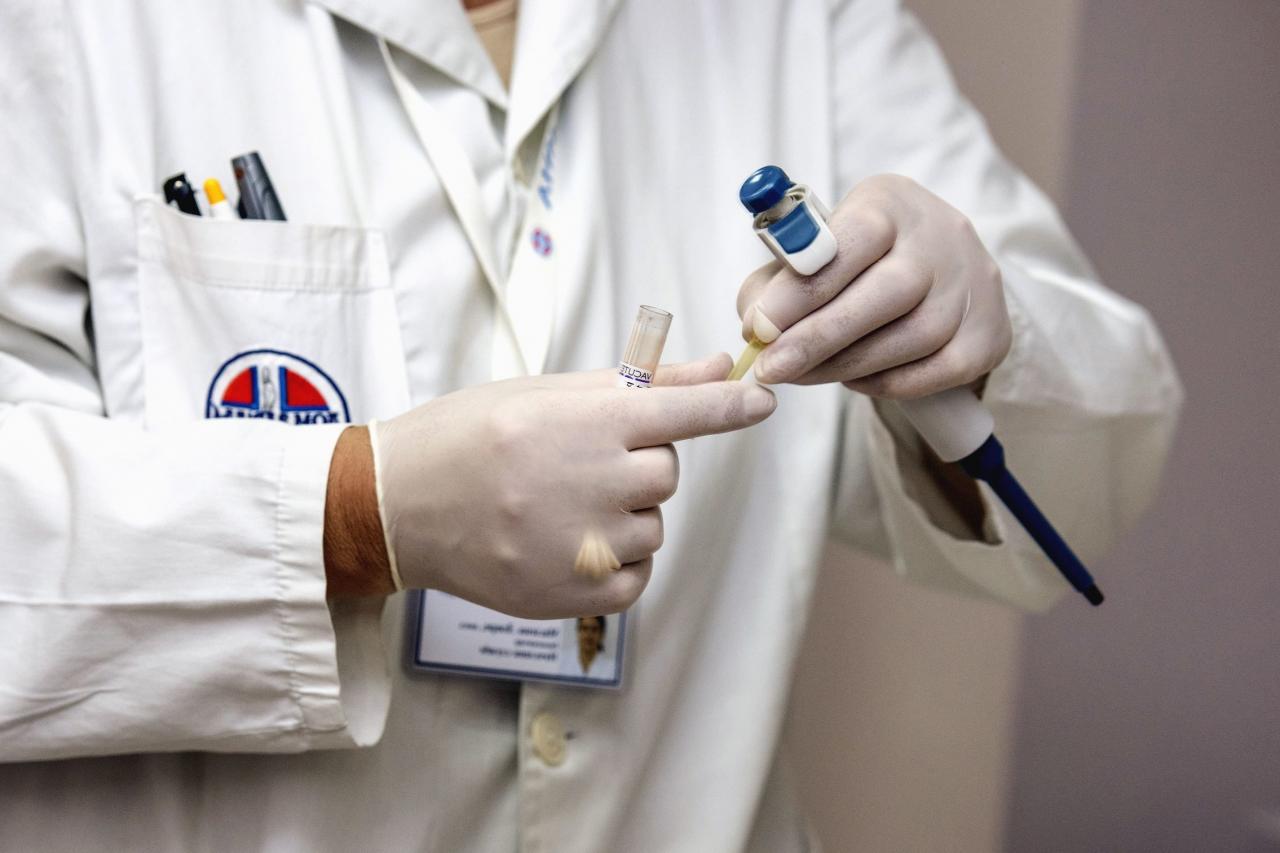Top Medical Schools in the United States sets the stage for an enthralling narrative that delves into the intricacies of medical education in a country renowned for its healthcare advancements. This exploration encompasses the rigorous path to becoming a physician, highlighting the essential steps from undergraduate studies to medical school, along with the critical role of accreditation. Readers will gain insights into the factors that shape the rankings of these esteemed institutions and the unique programs they offer, making this discussion both informative and engaging.
As we navigate through the criteria that define the best medical schools, we will uncover how research output, clinical training quality, and student-to-faculty ratios contribute to their esteemed reputations. Additionally, we will explore the diverse admission processes and financial considerations that prospective medical students face, ensuring a comprehensive understanding of the landscape of medical education in the United States.
Overview of Medical Education in the United States
Medical education in the United States is a comprehensive and rigorous process designed to prepare individuals for the demanding profession of medicine. It encompasses a variety of educational stages, from undergraduate studies to residency training, ensuring that future physicians are equipped with the necessary knowledge, skills, and ethical standards to provide high-quality patient care.
The journey to becoming a physician in the U.S. typically begins with an undergraduate education, where aspiring medical students complete a bachelor’s degree, often with a focus in the sciences. After obtaining this degree, candidates must then gain admission to a medical school, which generally requires passing the Medical College Admission Test (MCAT) and fulfilling other prerequisites. The medical school curriculum is designed to deliver both theoretical knowledge and practical clinical experience over a four-year program. Upon graduation, medical students earn a Doctor of Medicine (MD) or a Doctor of Osteopathic Medicine (DO) degree. Following this, graduates enter residency programs that last between three to seven years, depending on their chosen specialty, where they acquire hands-on training under supervision.
Importance of Accreditation in Medical Education
Accreditation plays a critical role in maintaining the quality and standards of medical education in the United States. It assures students, healthcare professionals, and the public that medical schools meet established criteria for educational quality and effectiveness. The major accrediting bodies in the U.S. include the Liaison Committee on Medical Education (LCME) for MD programs and the Commission on Osteopathic College Accreditation (COCA) for DO programs.
The accreditation process involves a comprehensive evaluation of medical schools based on educational quality, faculty qualifications, curriculum standards, and student outcomes. This process helps to ensure that graduates are adequately prepared for the challenges of medical practice. Furthermore, accreditation is essential for medical licensure, as many states require graduates to have attended an accredited program to qualify for the licensing examination.
“Accreditation serves as a mechanism of quality assurance, fostering continuous improvement in medical education.”
The benefits of accreditation are manifold, including:
- Enhancement of educational quality through systematic review and improvement.
- Increased public confidence in the competency of healthcare providers.
- Facilitation of student eligibility for federal financial aid and loans.
- Promotion of educational collaborations and partnerships among institutions.
Criteria for Ranking Medical Schools
The ranking of medical schools serves as a critical tool for prospective students, educators, and healthcare policymakers in assessing the quality and reputation of institutions. Various factors contribute significantly to these rankings, reflecting both the educational environment and the outcomes of graduates. Understanding these criteria helps in evaluating the strengths and weaknesses of medical schools across the United States.
One of the primary criteria for ranking medical schools involves the balance between research output and the quality of clinical training. Research productivity is often measured by the volume and impact of faculty publications, grant funding, and the presence of renowned researchers within the institution. In contrast, the quality of clinical training is assessed through residency match rates, student feedback, and the opportunities for hands-on learning provided by affiliated hospitals.
Research Output versus Clinical Training Quality
Research output and clinical training quality are both essential components in evaluating medical schools, yet they serve different purposes. Research output highlights the institution’s contributions to medical science, innovation, and advancements in healthcare. In contrast, clinical training quality emphasizes the practical competencies students acquire during their education.
– Research output is typically evaluated through various metrics, including:
- Number of published research papers in peer-reviewed journals.
- External funding received for research projects.
- Impact factor of the journals in which faculty publish.
- Recognition of faculty in prestigious awards and honors.
– Clinical training quality is assessed through metrics such as:
- Student performance on national board exams.
- Residency placement rates and the competitiveness of matches.
- Availability of diverse clinical rotations across various specialties.
- Student satisfaction ratings regarding clinical experiences.
The significance of these factors often varies based on the school’s mission. Institutions with a strong focus on research may prioritize faculty publications and funding, while those centered on training may emphasize clinical experiences and student outcomes.
Significance of Student-to-Faculty Ratios and Residency Placement Rates, Top Medical Schools in the United States
Student-to-faculty ratios and residency placement rates are crucial indicators of the educational environment and the success of graduates. A low student-to-faculty ratio often denotes a more personalized learning experience, allowing for greater interaction and mentorship between students and faculty. This ratio can significantly impact student satisfaction and academic performance.
– The importance of student-to-faculty ratios can be summarized through:
- Enhanced access to faculty for mentorship and guidance.
- Opportunities for research collaboration between students and faculty.
- More individualized attention during clinical training and coursework.
Residency placement rates reflect how well medical schools prepare their students for the next stage of their medical careers. Higher placement rates indicate that graduates are well-equipped for competitive residency programs, which is a vital step in their professional development.
– Critical factors regarding residency placement rates include:
- Overall match rates for graduates in their preferred specialties.
- Institutional support for students during the residency application process.
- Historical success rates of previous graduating classes.
- Reputation of the school among residency program directors.
Together, these criteria create a comprehensive picture of a medical school’s overall effectiveness in educating future healthcare professionals. The balance between research prowess, clinical training quality, student-to-faculty interactions, and residency placement success ultimately shapes the academic landscape of medical education in the United States.
Top Medical Schools and Their Unique Programs
The landscape of medical education in the United States is defined by a number of prestigious institutions that offer exceptional training, innovative research opportunities, and a commitment to community service. Each of the top medical schools brings a unique approach to education, often reflecting the values and missions of their founding institutions. This section explores several of these leading medical schools and highlights the distinctive programs that set them apart.
One of the hallmarks of top medical schools is their specialization in certain fields, as well as their dedication to research and primary care. Programs that excel in these areas often foster a rich campus culture, where collaboration and innovation are encouraged. Below are notable medical schools that exemplify excellence in their respective fields.
Distinguished Medical Schools and Their Notable Programs
The following institutions are recognized for their outstanding contributions to medical education and research. Each school offers unique programs designed to prepare students for the challenges of modern medicine.
- Harvard Medical School: Renowned for its research capabilities, Harvard offers a unique MD/PhD program that integrates clinical and laboratory training. The school’s extensive resources and affiliation with top hospitals like Massachusetts General Hospital provide students with unrivaled access to clinical research opportunities.
- Johns Hopkins University School of Medicine: The Johns Hopkins program is lauded for its emphasis on research and evidence-based medicine. Their primary care program focuses on community health, encouraging students to engage with the local population through various outreach initiatives, thereby fostering a sense of social responsibility.
- Stanford University School of Medicine: Stanford’s strong focus on innovation is evident in its Bio-X program, which promotes interdisciplinary research combining medicine with engineering, physics, and biology. The school’s collaborative environment encourages students to pursue groundbreaking research in fields such as regenerative medicine and biotechnology.
- University of California, San Francisco (UCSF) School of Medicine: UCSF excels in primary care training and ranks consistently high in this area. Its curriculum emphasizes patient-centered care and includes a robust program in global health, preparing students to address health disparities on an international scale.
- Columbia University Vagelos College of Physicians and Surgeons: Known for its commitment to social justice and health equity, Columbia offers a unique program called the “Columbia University Medical Center’s Urban Health Initiative.” This program immerses students in underserved communities, providing real-world experiences that highlight the importance of equitable healthcare.
The campus culture at these institutions often embodies a spirit of collaboration, innovation, and service. Students engage in various extracurricular activities, from research symposiums to community outreach programs, which enrich their educational experience and foster lifelong connections. Each school cultivates a strong sense of community among its students, creating an environment where future physicians can thrive both personally and professionally.
By examining these top medical schools and their unique offerings, it becomes evident that they play a crucial role in shaping the future of healthcare through education, research, and dedication to community service.
Admission Processes and Requirements
The admission process for top medical schools in the United States is highly competitive and demands careful preparation from prospective students. Understanding the common requirements and components of the application ensures that candidates can navigate this process effectively and present themselves as strong applicants.
The application to medical schools generally comprises several essential elements that showcase the candidate’s academic background and personal qualities. Among these, standardized test scores, personal statements, and interviews play crucial roles in the selection process.
Common Admission Requirements
Medical schools typically require a comprehensive set of documents and tests to assess applicants. These requirements ensure that candidates possess the necessary educational background and aptitude for medical studies. Key components include the following:
- MCAT Scores: The Medical College Admission Test (MCAT) is a standardized examination that evaluates the knowledge and skills necessary for success in medical school. Most top medical schools require applicants to submit their MCAT scores as part of the application process.
- Transcripts: Official transcripts from all post-secondary institutions attended are required, reflecting grades in prerequisite courses, which usually include biology, chemistry, physics, and mathematics.
- Letters of Recommendation: Most schools ask for letters of recommendation from professors or professionals in the medical field who can attest to the applicant’s qualifications and character.
- Personal Statement: This document allows applicants to express their motivation for pursuing a career in medicine, highlighting personal experiences and aspirations.
- Resume or CV: A detailed account of academic achievements, volunteer experiences, research involvement, and relevant work history provides a comprehensive view of the applicant’s journey to medical school.
- Interview: An interview is often a critical component of the admission process, allowing schools to assess the interpersonal and communication skills of candidates.
Importance of Personal Statements and Interviews
The personal statement is a vital aspect of the medical school application, as it offers candidates the opportunity to convey their unique experiences, motivations, and goals. A compelling personal statement can significantly enhance an applicant’s profile by demonstrating passion for medicine, resilience, and the ability to reflect on personal growth.
Interviews further complement the application process by allowing admissions committees to gauge the applicant’s personality, ethical reasoning, and suitability for the medical profession. A successful interview presents an opportunity for candidates to showcase their interpersonal skills and demonstrate how they would fit within the medical school’s culture and values.
“The personal statement and interview are not just requirements; they are platforms for applicants to share their narrative and vision for their future in medicine.”
Financial Considerations for Medical Students: Top Medical Schools In The United States

Pursuing a medical education in the United States is a significant financial commitment that requires careful planning and consideration. Medical students often face high tuition costs and various associated expenses, which necessitate a thorough understanding of available financial resources. This section delves into the financial implications of medical schooling, including tuition, financial aid options, and potential returns on investment following graduation.
Tuition Costs and Associated Expenses
The costs of attending medical school can vary widely depending on the institution. Tuition fees for medical schools in the United States average approximately $40,000 to $60,000 per year for public institutions, with private schools often costing between $50,000 and $70,000 annually. These figures do not include additional expenses.
Along with tuition, students should anticipate other costs such as:
- Housing: The cost of living varies by location, but students should budget for rent, utilities, and groceries.
- Books and Supplies: Medical textbooks, medical equipment, and other supplies can add up to $1,000 or more per year.
- Health Insurance: Coverage is often required and can cost $2,000 to $5,000 annually.
- Fees: Additional fees for laboratory and clinical experiences can also contribute to overall expenses.
Financial Aid Options for Medical Students
Numerous financial aid options are available to assist medical students in managing the costs of their education. These include scholarships, grants, and loans.
Several notable scholarships and funding opportunities are tailored specifically for medical students, which can significantly alleviate the financial burden:
- National Health Service Corps (NHSC) Scholarship Program: Offers financial support in exchange for a commitment to work in underserved areas after graduation.
- Medical School Scholarships: Many medical schools provide merit-based and need-based scholarships to attract high-caliber candidates.
- Federal Direct Loans: These loans offer lower interest rates and various repayment plans, making them a viable option for many students.
Students are encouraged to explore all available options and complete the Free Application for Federal Student Aid (FAFSA) to maximize their financial aid opportunities.
Return on Investment and Salary Expectations After Graduation
Investing in a medical education can yield substantial financial returns over time. While the initial costs may seem daunting, the potential salary for medical professionals often justifies the investment. According to the U.S. Bureau of Labor Statistics, the median annual wage for physicians and surgeons is approximately $208,000, with many specialties earning significantly more.
Additionally, residents and fellows can expect to earn salaries ranging from $50,000 to $80,000 during their training years. The long-term earning potential, combined with job stability in the medical profession, typically leads to a favorable return on investment.
The decision to invest in medical education is often supported by the strong salary potential and the rewarding nature of a career in healthcare.
In summary, while financial considerations for medical students can be complex and substantial, understanding tuition costs, financial aid options, and salary expectations can empower students to make informed decisions about their medical education.
Innovations in Medical Education
The field of medical education is undergoing a transformative evolution, driven by advancements in technology and innovative teaching methodologies. As healthcare systems worldwide face complex challenges, medical schools are adapting their curricula and training approaches to better prepare future healthcare professionals. This shift not only enhances learning but also promotes a more collaborative and effective healthcare environment.
A notable trend in medical education is the integration of technology, which is reshaping the way students learn and interact with clinical knowledge. From online resources to advanced simulation techniques, technology is facilitating a more engaging and practical learning experience.
Innovative Teaching Methods in Medical Schools
Medical schools are embracing a variety of innovative teaching methods that enhance student engagement and improve learning outcomes. Examples of these methods include:
- Problem-Based Learning (PBL): This approach encourages students to take an active role in their education by solving real-world clinical problems in small groups, fostering critical thinking and collaborative skills.
- Flipped Classroom Models: Students review lecture materials at home and engage in interactive discussions and hands-on practice during class time, enhancing understanding and retention of complex topics.
- Team-Based Learning (TBL): This strategy promotes active learning through collaborative assignments, where students work in teams to solve problems and apply their knowledge, thereby improving teamwork and communication skills.
- Reflective Practice: Students are encouraged to reflect on their experiences and learning processes, promoting self-awareness and continuous improvement in their clinical skills and interactions with patients.
Technology Shaping the Future of Medical Education
The role of technology in medical education is paramount, as it offers innovative solutions that address various learning challenges. Key areas of technological influence include:
- Online Learning Platforms: With the rise of remote education, medical schools are utilizing online platforms to provide access to lectures, resources, and collaborative tools, allowing students to learn at their own pace regardless of location.
- Simulation-Based Training: Simulation technology enables students to practice clinical skills in a safe and controlled environment. High-fidelity simulators can mimic real-life patient scenarios, providing invaluable hands-on experience without risk to actual patients.
- Virtual Reality (VR) and Augmented Reality (AR): These technologies are being used to create immersive learning experiences, allowing students to visualize complex anatomical structures and practice procedures in an interactive setting.
- Mobile Applications: Medical students can access a wealth of information and tools through mobile apps, which help in managing their studies, accessing medical databases, and practicing clinical decision-making on-the-go.
Interprofessional Education in Healthcare Training
Interprofessional education (IPE) is emerging as a crucial component in preparing future healthcare professionals. This approach emphasizes collaboration among various health disciplines to improve patient care and outcomes. The significance of IPE is highlighted through:
- Collaborative Learning Experiences: Students from different healthcare fields—such as medicine, nursing, pharmacy, and social work—engage in joint learning activities, helping them to understand different roles and perspectives within the healthcare team.
- Enhancing Communication Skills: IPE promotes the development of communication and teamwork skills essential for effective patient care, fostering an understanding of how to work collaboratively in diverse healthcare settings.
- Improving Patient Outcomes: By participating in interprofessional teams, students learn to coordinate care among various disciplines, which has been shown to improve patient satisfaction and clinical outcomes, highlighting the importance of integrated healthcare delivery.
Careers and Specializations Post-Medical School

Graduates of top medical schools have a diverse array of career paths available to them, often influenced by their interests, skills, and the needs of the healthcare system. This section explores various specialties, the duration of training required, and the significance of residency programs in shaping the future careers of medical professionals.
Career Paths Available to Medical Graduates
Medical graduates can pursue a variety of career paths, including, but not limited to, clinical practice, research, teaching, and healthcare administration. Each path offers unique opportunities and challenges, catering to different interests within the field of medicine.
- Clinical Medicine: Many graduates enter clinical practice as physicians or surgeons, providing patient care in various settings such as hospitals, clinics, or private practices.
- Research: Some choose to engage in medical research, contributing to advancements in healthcare through clinical trials and studies aimed at understanding diseases and developing new treatments.
- Medical Education: Graduates may also move into academia, teaching the next generation of healthcare providers and engaging in scholarly activities.
- Healthcare Administration: A career in healthcare management allows graduates to oversee operations, develop policies, and improve the efficiency of healthcare systems.
Comparison of Specializations
The variety of medical specializations allows graduates to tailor their careers to their interests and the needs of the population. Specializations differ significantly in their training duration and the nature of their practice.
- Primary Care: Fields such as Family Medicine or Internal Medicine require three years of residency training, focusing on comprehensive patient care and preventive medicine.
- Surgical Specialties: Specialties like General Surgery or Orthopedic Surgery typically require five to seven years of residency, emphasizing procedural skills and surgical techniques.
- Subspecialties: Areas such as Cardiology or Gastroenterology require additional fellowship training, extending the total training time to around six to eight years post-medical school.
- Emergency Medicine: This specialty generally requires three to four years of residency training, focusing on acute care and critical interventions.
The Role of Residency Programs
Residency programs are crucial in shaping the careers of medical graduates, providing hands-on training in their chosen specialties. These programs serve as a bridge between medical school education and independent practice, facilitating the development of clinical skills, professional behavior, and decision-making capabilities.
“Residency is where medical knowledge meets real-world application, shaping the physician you will become.”
During residency, physicians work alongside experienced practitioners, gain exposure to a wide range of medical conditions, and fine-tune their clinical abilities. The competition for residency positions can be intense, reflecting the need for a dedicated and skilled workforce in medicine. Moreover, residency programs often influence future job opportunities, networking connections, and professional growth. Understanding the dynamics of residency is essential for graduates as they navigate their careers in medicine.
Last Recap
In conclusion, understanding the Top Medical Schools in the United States is not merely an academic exercise; it is a vital step for aspiring healthcare professionals seeking to make impactful contributions to society. By examining the unique programs, admission requirements, and financial considerations, we gain a deeper appreciation for the dedication involved in pursuing a medical career. As innovations continue to transform medical education, the future promises exciting developments that will shape the next generation of healthcare providers.
Popular Questions
What are the top factors to consider when choosing a medical school?
Key factors include accreditation status, location, tuition costs, available specialties, and the school’s reputation for research and clinical training.
How long does it typically take to complete medical education?
Completing medical education usually takes around 7-11 years, which includes undergraduate studies, medical school, and residency training.
What financial aid options are available for medical students?
Medical students can access scholarships, federal loans, private loans, and grants to help manage the costs of medical education.
What is the role of the MCAT in medical school admissions?
The MCAT is a standardized test that assesses the knowledge and skills necessary for success in medical school and is a critical component of the application process.
How do residency programs affect career specialization?
Residency programs provide hands-on training in specific medical fields and are essential for developing expertise in a chosen specialization.







